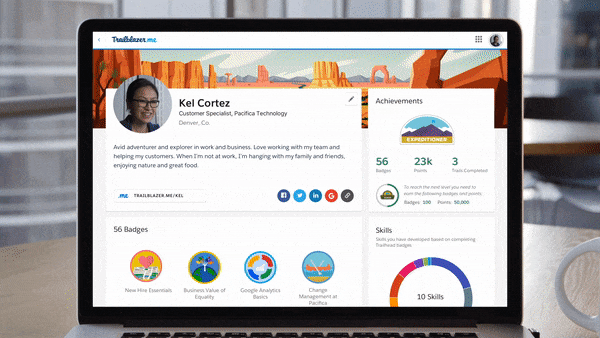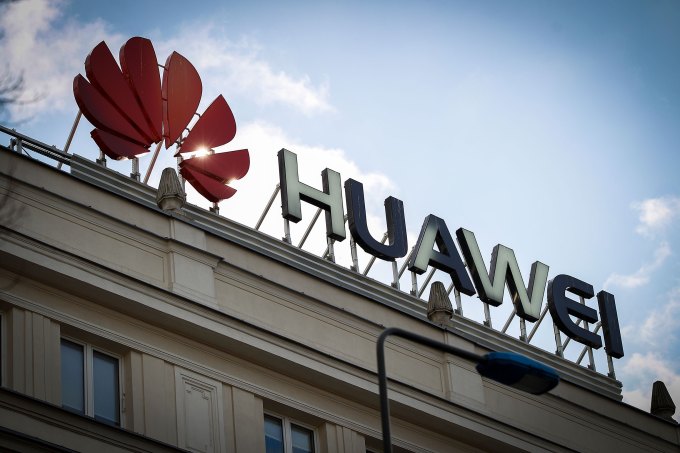SurveyMonkey acquires web survey company Usabilla for $80M
SurveyMonkey announced today that it has acquired Usabilla, an Amsterdam-based website and app survey company, for $80 million in cash and stock.
Zander Lurie, CEO at SurveyMonkey, said Usabilla filled in a missing piece in its survey toolkit. “A key product that we identified that we really wanted to add to the portfolio, which is really adjacent to our VOC (voice of the customer) solution is a website feedback collector helping people on the web or on mobile apps really understand what users are doing on their site,” Lurie told TechCrunch.
Usabilla CEO Marc van Agteren says his company is adding a complementary product to SurveyMonkey. “If you compare us to the SurveyMonkey enterprise solution where you create surveys that you need to send out via social media or email, our software sits on a website and instantly provides feedback,” he said. For example, if there is a bug on the page, the user can click the Usabilla tool, capture the area of the page that’s problematic as a screenshot and send it with a comment to the website or app owner for review.
Conversely the website or app owner could display a question for the visitor to answer before he or she exits. This provides a way to get immediate feedback about design or why they are leaving without finishing a transaction, as examples.
Qualtrics, another survey company, was about to go public last fall when it was acquired by SAP for $8 billion, but Lurie doesn’t necessarily see this move as a reaction to that. He said that today’s acquisition was really related to enhancing the company’s enterprise product.
As for Qualtrics, he says that with the acquisition, it is more aligned with SAP now, and therefore really being marketed to SAP customers. He sees plenty of room in the survey market with customers of Adobe, Salesforce and Microsoft and others, whom he says probably aren’t looking for an SAP solution.
With Usabilla, SurveyMonkey gains a stronger foothold in the EU as the company’s headquarters in Amsterdam will become the SurveyMonkey’s largest EU office. The transaction also adds 130 new employees to the SurveyMonkey family, bringing the total number to more than 1,000. In addition, it can now access Usabilla’s 450 customers, which include Lufthansa, Philips and Vodafone. Lurie said there is some customer overlap, but given that the majority of Usabilla’s customers are outside the U.S., there would likely be a net customer gain from the purchase.
SurveyMonkey was founded in 1999 and went public last September. This is the company’s sixth acquisition and the first in three years, according to Lurie. Usabilla was founded in 2009 and raised a modest $1 million along the way.
The deal is subject to the normal regulatory approval process and is expected to close some time in the second quarter this year.
Powered by WPeMatico
Quip launches toothbrush for kids
Quip, the dental care startup, is releasing a new product aimed toward kids. Similar to the electric toothbrush it makes for adults, the kids’ brush features a timer that pulsates every 30 seconds and automatically turns off after two minutes.
The main differences between the brush for kids and one for adults is the non-slip grip plastic handle, smaller brush head and new colors. Quip for kids costs $25 for a brush head starter set with a flavored toothpaste subscription ($10 every three months) or $30 with a starter set and brush head subscription ($5 every three months).
“If we’re going to fulfill our mission of improving oral health for every age, it’s better to cast those habits and form those habits at an early age,” Quip CEO Simon Enever told TechCrunch. “And build right habits before you’re nine years old.”
Quip began as a subscription-based electric toothbrush service that replaces toothpaste and brush heads, partly because you’re apparently supposed to change your toothbrush every three months. Since its launch, Quip has steadily evolved its offerings by inviting dentists to join the platform to connect with Quip’s consumer subscribers.
“The features dentists were asking for was the same Quip for kids,” Enever said. “Knowing that the timer and pulses would guide basic habits, the biggest thing dentists wanted was getting kids to want to brush their teeth. That would be the win.”
Last May, Quip raised $10 million and acquired dental insurance startup Afora to live inside Quip Labs, the startup’s venture studio. The idea with Labs is to fuel innovation in oral health products, platforms and services. This brush for kids, however, is Quip’s first new product since launch.
That’s thanks to Quip’s $40 million funding round back in November. At the time, Enever told me Quip had a lot of new products and services launches ahead of it. To date, Quip has raised more than $60 million in funding.
Powered by WPeMatico
Salesforce releases myTrailhead, a customizable training platform
Salesforce has been using the notion of trailblazers as a learning metaphor for several years, ever since it created Trailhead, a platform to teach customers Salesforce skills. Today, the company announced the availability of myTrailhead, a similar platform that enables a company to create branded, fully customizable training materials based on the Trailhead approach.
It’s worth noting that the company originally announced this idea at Dreamforce in November, 2017, and after testing it on 13 pilot customers (including itself) for the last year is making the product generally available today.
While Trailhead is all about teaching Salesforce skills, myTrailhead is about building on that approach to teach whatever other skills a company might find desirable with its own culture, style, branding and methodologies.
It builds on the whole Trailhead theme of blazing a learning trail, providing a gamified approach to self-paced training, where users are quizzed throughout to reinforce the lessons, awarded badges for successfully completing modules and given titles like Ranger for successfully completing a certain number of courses.
By gamifying the approach, Salesforce hopes people will have friendly competition within companies, but it also sees these skills as adding value to an employee’s resume. If a manager is looking for an in-house hire, they can search by skills in myTrailhead and find candidates who match their requirements. Additionally, employees who participate in training can potentially advance their careers with the their enhanced skill sets.

While you can continue to teach Salesforce skills in myTrailhead, it’s really focused on the customization and what companies can add on top of the Salesforce materials to make the platform their own. Salesforce envisions companies using the platform for new employee onboarding, sales enablement or customer service training, but if a company is ambitious, it could use this as a broader training tool.
There is an analytics component in myTrailhead, so management can track when employees complete required training modules, understand how well they are doing as they move through a learning track or recognize when employees have updated their skill sets.
The idea is to build on the Trailhead platform concept to provide companies with a methodology for creating a digital approach to learning, which Salesforce sees as an essential ingredient of becoming a modern company. The product is available immediately.
Powered by WPeMatico
Neutrino employees who once worked for a controversial surveillance tech company will leave Coinbase
Last month, Coinbase’s acquisition of blockchain analytics startup Neutrino was criticized because of the founders’ ties to a controversial surveillance technology company called Hacking Team. Today Coinbase CEO Brian Armstrong said in a blog post that employees of Neutrino who previously worked at Hacking Team will transition out of Coinbase instead of joining its team in London as originally planned.
Neutrino maps blockchain networks, focusing on crypto token transactions, and one of its main services is working with law enforcement to track stolen digital assets, investigate ransomware attacks and analyze activity on the “darknet.” Before launching Neutrino, CEO Giancarlo Russo, CTO Alberto Ornaghi and chief research officer Marco Valleri worked at Hacking Team, a security and surveillance tech company that has been criticized for selling products to governments with a history of human rights violations, including Egypt, Kazakhstan, Russia, Saudi Arabia, Sudan and Turkey. As The Intercept reported in 2015, Hacking Team’s malware has also been found on the computers of activists and journalists.
The close link between Hacking Team and Neutrino concerned many members of the blockchain community. Amber Baldet, CEO of Clovyr and the former lead of JP Morgan’s blockchain program, told Motherboard that “given the number of accounts Coinbase has opened, how they choose to implement compliance tools and their relationship with law enforcement will impact a lot of people.”
In his post, Armstrong said there was “a gap in our diligence process” while Coinbase was shopping for a blockchain analytics startup to acquire.
“While we looked hard at the technology and security of the Neutrino product, we did not properly evaluate everything from the perspective of our mission and values as a crypto company,” he wrote. “We took some time to dig further into this over the past week, and together with the Neutrino team have come to an agreement: those who previously worked at Hacking Team (despite the fact that they have no current affiliation with Hacking Team), will transition out of Coinbase. This was not an easy decision, but their prior work does present a conflict with our mission. We are thankful to the Neutrino team for engaging with us on this outcome.”
“Coinbase seeks to be the most secure, trusted, and legally compliant bridge to cryptocurrency,” he added. “We sometimes need to make practical tradeoffs to run a modern, regulated exchange, but we did not make the right tradeoff in this specific case. We will fix it and find another way to serve our customers while complying with the law.”
Coinbase achieved an $8 billion valuation last October after raising a $300 million Series E and is focused on broadening its user base from consumers to institutional investors. Neutrino’s eight employees had planned to move to Coinbase’s office in London as part of the acquisition.
Powered by WPeMatico
Failed meal-kit service Munchery owes $6M to gift card holders, vendors
Several weeks after a sudden shutdown left customers and vendors in the lurch, meal-kit service Munchery has filed for bankruptcy. In the Chapter 11 filing, Munchery chief executive officer James Beriker cites increased competition, over-funding, aggressive expansion efforts and Blue Apron’s failed IPO as reasons for its demise.
Munchery owes $3 million in unfulfilled customer gift cards and another $3 million to its vendors, suppliers and various counterparties, the filing reveals. The company’s remaining debt includes $5.3 million in senior secured debt and convertible debt of approximately $23 million. Munchery says its scrounged up $5 million from a buyer of its equipment, machinery and San Francisco headquarters.
The business had raised more than $100 million in venture capital funding, reaching a valuation of $300 million in 2015 before ceasing operations on January 22 and laying off 257 employees in the process. Munchery was backed by Menlo Ventures, Sherpa Capital, e.Ventures, Cota Capital and others.
The company, which failed to notify its vendors it was going out of business, has been scrutinized for failing to pay those vendors in the wake of its shutdown. To make matters worse, emails viewed by TechCrunch show Munchery continued aggressively marketing its gift cards in emails sent to customers in December, weeks before a final email to those very same customers announced it was ceasing operations, effectively immediately.

An email advertising Munchery gift cards sent to a customer weeks before the startup went out of business.
The latest court filings shed light on Beriker’s decision-making process in those final months, touching on Munchery’s frequent pivots, the company’s 2017 layoffs, its plans to scale sales of Munchery products in Amazon Go stores and failed attempts at a sale. Beriker is the sole remaining Munchery board member. He has not responded to several requests for comment from TechCrunch.
In the third quarter of 2018, Munchery, at the recommendation of its board, hired an investment bank to find a buyer for the startup, to no avail. Beriker suggests the lack of a buyer, coupled with industry trends like larger-than-necessary venture capital rounds and inflated valuations, were cause for the startup’s failure to deliver.
“The company expanded too aggressively in its early years,” the filing states. “The access to significant amounts of capital from leading Silicon Valley venture capital firms at high valuations and low-cost debt from banks and venture debt firms, combined with the perception that the on-demand food delivery market was expanding quickly and would be dominated by one or two brands– as Uber had dominated the ridesharing market– drove the company to aggressively invest in its business ahead of having a well-established and scalable business model.”
Increased competition from well-funded competitors drove the startup off course, too, and the epic failure that was Blue Apron’s IPO, which had a “material negative impact on access to financing for startups in the online food delivery business,” was just the cherry on top, according to Beriker’s statements.
Former Munchery vendors protested today at @sherpa, one of the startup’s investors that’ve stayed silent as former employees, vendors and drivers claim to be owed thousands: “Startup idea don’t steal pies!” Photo by @ThreeBabesBake pic.twitter.com/kfaOZ9CFkq
— Kate Clark (@KateClarkTweets) January 30, 2019
Munchery’s vendors, who were not notified or paid following Munchery’s announcement, have provided outspoken criticism to the company and venture capital’s lack of accountability in the weeks following Munchery’s shutdown. Lenore Estrada of Three Babes Bakeshop, among several vendors owed thousands of dollars in unpaid invoices, orchestrated a protest outside of Munchery investor Sherpa Capital’s offices in January. She said she has spoken with Beriker and founding Munchery CEO Conrad Chu in an attempt to pick up the pieces of the failed startup puzzle.
“None of us who are owed money are going to get anything,” Estrada told TechCrunch earlier today. “But the CEO, after fucking it all up, is still getting paid.”
Beriker, indeed, is still earning a salary of $18,750 per month, one-half of his pre-bankruptcy salary, as well as a “success fee based on the net proceeds recovered from the sale of the company’s assets up to a maximum of $250,000,” the filing states.
View the full bankruptcy filing here:
Powered by WPeMatico
Glossier launches its first spin-off brand, a line of Instagram-friendly ‘dialed-up’ beauty extras
Glossier, known for its line of understated makeup products and a cult-following of millennial Instagrammers, is getting colorful with the launch of its first spin-off brand, Glossier Play.
The company — led by founder and chief executive officer Emily Weiss, who built the nearly $400 million business from a makeup blog called Into The Gloss — has raised a total of $92 million in venture capital funding from top-tier consumer investors Forerunner Ventures, Index Ventures and IVP. Stitch Fix founder Katrina Lake and Forerunner founder and general partner Kirsten Green, are among the company’s board members.
Weiss introduced Glossier in 2014 as a clean-skincare and natural beauty advocate. Today, the direct-to-consumer business boasts a growing line of barely there makeup, designed to mimic Weiss’s own subtle, au naturale vibe. The launch of Glossier Play, inspired by 1970s’ nostalgia, is its first foray into bright colors, glitter and, in the brand’s own words, “dialed-up extras.”
Glossier Play’s initial line-up of “extras” includes colored eyeliners ($15), highlighters ($20), multi-purpose glitter gel ($14) and the “Vinylic Lip” ($16). Customers can purchase “The Playground,” a set that includes each of the new products, for $60.
Introducing Glossier Play! A brand of dialed-up beauty extras that make getting ready the best part about going out. Four new makeup products at https://t.co/4PxDM67E2R pic.twitter.com/ULRrc9Ycn3
— Glossier (@glossier) March 4, 2019
The advertising campaign for the Instagram -friendly line will be led by none other than Instagram star Donté Colley, as well as pop musician Troye Sivan. The new line and future spin-offs will help Glossier compete with beauty incumbents, Estée Lauder and L’Oréal, for example, in a market estimated to be worth $750 billion by 2024.
Glossier, headquartered in New York, counts 200 employees, meager in comparison to its nearly 2 million — and growing — social media following. The company surpassed $100 million in annual revenue in 2018, it tells TechCrunch, and acquired 1 million new customers. In total, Glossier retails 29 products across skincare, makeup, body, and fragrance.
The company won’t be introducing additional brands this year and clarified it is not a brand incubator.
Powered by WPeMatico
Galaxy S10 takes the ‘best smartphone display’ crown
As you may have gathered from our review of Samsung’s Galaxy S10, it’s a very solid phone with lots of advanced features. But one thing that’s especially difficult to test is the absolute quality of the display — which is why we leave that part to the experts. And this expert says the S10’s screen is the best ever on a smartphone.
Ray Soneira has tested every major phone, tablet and laptop series for many a year, using all the cool color calibration, reflectance and brightness measurement and other gear that goes with the job. So when he says the S10’s display is “absolutely stunning and Beautiful,” with a capital B at that, it’s worth taking note.
OLED technology has advanced a great deal since the first one I encountered, on the Zune HD — which still works and looks great, by the way, thank you. But originally it had quite a few trade-offs compared with LCD panels, such as weird color casts or pixel layout issues. Samsung has progressed well beyond that and OLED has come into its own with a vengeance. As Ray puts it:
The Absolute Color Accuracy on the Galaxy S10 is the Most Color Accurate Display we have ever measured. It is Visually Indistinguishable From Perfect, and almost certainly considerably better than your existing Smartphone, living room HDTV, Tablet, Laptop, and computer monitor, as demonstrated in our extensive Absolute Color Accuracy Lab Measurements.
The very challenging set of DisplayMate Test and Calibration Photos that we use to evaluate picture quality looked absolutely stunning and Beautiful, even to my experienced hyper-critical eyes.
Make sure you switch the phone’s display to “natural mode,” which makes subtle changes to the color space depending on the content and ambient light.
And although he has enthused many times before about the quality of various displays and the advances they made over their predecessors, the above is certainly very different language from, for example, how he described the reigning champ until today — the iPhone X:
Apple has produced an impressive Smartphone display with excellent performance and accuracy, which we cover in extensive detail below. What makes the iPhone X the Best Smartphone Display is the impressive Precision Display Calibration Apple developed, which transforms the OLED hardware into a superbly accurate, high performance, and gorgeous display, with close to Text Book Perfect Calibration and Performance!!
High praise, but not quite falling all over himself, as he did with the S10. As you can see, I rate smartphone displays chiefly by the emotional response they evoke from Ray Soneira.
At this point, naturally, the gains from improving displays are fairly few, because, to be honest, not many people care or can even tell today’s flagship displays apart. But little touches like front and back sensors for ambient light detection, automatic calibration and brightness that take user preferences into account — these also improve the experience, and phone makers have been adding them at a good clip, as well.
No matter which flagship phone you buy today, it’s going to have a fantastic camera and screen — but if you like to see it all in black and white, read through the review and you’ll find your hopes justified.
Powered by WPeMatico
Can predictive analytics be made safe for humans?
Massive-scale predictive analytics is a relatively new phenomenon, one that challenges both decades of law as well as consumer thinking about privacy.
As a technology, it may well save thousands of lives in applications like predictive medicine, but if it isn’t used carefully, it may prevent thousands from getting loans, for instance, if an underwriting algorithm is biased against certain users.
I chatted with Dennis Hirsch a few weeks ago about the challenges posed by this new data economy. Hirsch is a professor of law at Ohio State and head of its Program on Data and Governance. He’s also affiliated with the university’s Risk Institute.
“Data ethics is the new form of risk mitigation for the algorithmic economy,” he said. In a post-Cambridge Analytica world, every company has to assess what data it has on its customers and mitigate the risk of harm. How to do that, though, is at the cutting edge of the new field of data governance, which investigates the processes and policies through which organizations manage their data.
You’re reading the Extra Crunch Daily. Like this newsletter? Subscribe for free to follow all of our discussions and debates.
“Traditional privacy regulation asks whether you gave someone notice and given them a choice,” he explains. That principle is the bedrock for Europe’s GDPR law, and for the patchwork of laws in the U.S. that protect privacy. It’s based around the simplistic idea that a datum — such as a customer’s address — shouldn’t be shared with, say, a marketer without that user’s knowledge. Privacy is about protecting the address book, so to speak.
The rise of “predictive analytics,” though, has completely demolished such privacy legislation. Predictive analytics is a fuzzy term, but essentially means interpreting raw data and drawing new conclusions through inference. This is the story of the famous Target data crisis, where the retailer recommended pregnancy-related goods to women who had certain patterns of purchases. As Charles Duhigg explained at the time:
Many shoppers purchase soap and cotton balls, but when someone suddenly starts buying lots of scent-free soap and extra-big bags of cotton balls, in addition to hand sanitizers and washcloths, it signals they could be getting close to their delivery date.
Predictive analytics is difficult to predict. Hirsch says “I don’t think any of us are going to be intelligent enough to understand predictive analytics.” Talking about customers, he said “They give up their surface items — like cotton balls and unscented body lotion — they know they are sharing that, but they don’t know they are giving up their pregnancy status. … People are not going to know how to protect themselves because they can’t know what can be inferred from their surface data.”
In other words, the scale of those predictions completely undermines notice and consent.
Even though the law hasn’t caught up to this exponentially more challenging problem, companies themselves seem to be responding in the wake of Target and Facebook’s very public scandals. “What we are hearing is that we don’t want to put our customers at risk,” Hirsch explained. “They understand that this predictive technology gives them really awesome power and they can do a lot of good with it, but they can also hurt people with it.” The key actors here are corporate chief privacy officers, a role that has cropped up in recent years to mitigate some of these challenges.
Hirsch is spending significant time trying to build new governance strategies to allow companies to use predictive analytics in an ethical way, so that “we can achieve and enjoy its benefits without having to bear these costs from it.” He’s focused on four areas: privacy, manipulation, bias and procedural unfairness. “We are going to set out principles on what is ethical and and what is not,” he said.
Much of that focus has been on how to help regulators build policies that can manage predictive analytics. Because people can’t understand the extent that inferences can be made with their data, “I think a much better regulatory approach is to have someone who does understand, ideally some sort of regulator, who can draw some lines.” Hirsch has been researching how the FTC’s Unfairness Authority may be a path forward for getting such policies into practice.
He analogized this to the Food and Drug Administration. “We have no ability to assess the risks of a given drug [so] we give it to an expert agency and allow them to assess it,” he said. “That’s the kind of regulation that we need.”
Hirsch overall has a balanced perspective on the risks and rewards here. He wants analytics to be “more socially acceptable,” but at the same time, sees the needs for careful scrutiny and oversight to ensure that consumers are protected. Ultimately, he sees that as incredibly beneficial to companies that can take the value out of this tech without risking provoking consumer ire.
Who will steal your data more: China or America?

Jaap Arriens/NurPhoto via Getty Images
Talking about data ethics, Europe is in the middle of a superpower pincer. China’s telecom giant Huawei has made expansion on the continent a major priority, while the United States has been sending delegation after delegation to convince its Western allies to reject Chinese equipment. The dilemma was quite visible last week at MWC Barcelona, where the two sides each tried to make their case.
It’s been years since the Snowden revelations showed that the United States was operating an enormous eavesdropping infrastructure targeting countries throughout the world, including across Europe. Huawei has reiterated its stance that it does not steal information from its equipment, and has repeated its demands that the Trump administration provide public proof of flaws in its security.
There is an abundance of moral relativism here, but I see this as increasingly a litmus test of the West on China. China has not hidden its ambitions to take a prime role in East Asia, nor has it hidden its intentions to build a massive surveillance network over its own people or to influence the media overseas.
Those tactics, though, are straight out of the American playbook, which lost its moral legitimacy over the past two decades from some combination of the Iraq War, Snowden, WikiLeaks and other public scandals that have undermined trust in the country overseas.
Security and privacy might have been a competitive advantage for American products over their Chinese counterparts, but that advantage has been weakened for many countries to near zero. We are increasingly going to see countries choose a mix of Chinese and American equipment in sensitive applications, if only to ensure that if one country is going to steal their data, it might as well be balanced.
Things that seem interesting that I haven’t read yet

- Lyft S-1
- Concrete: the most destructive material on Earth | Cities | The Guardian
- Silicon Valley Skeptical of Washington’s China Concerns
- France Plans 5% Digital Tax as Governments Chase Internet Giants – Bloomberg
- Status as a Service (StaaS) — Remains of the Day
- Why American Costs Are So High (Work-in-Progress) | Pedestrian Observations
Obsessions
- Perhaps some more challenges around data usage and algorithmic accountability
- We have a bit of a theme around emerging markets, macroeconomics and the next set of users to join the internet
- More discussion of megaprojects, infrastructure and “why can’t we build things?”
Thanks
To every member of Extra Crunch: thank you. You allow us to get off the ad-laden media churn conveyor belt and spend quality time on amazing ideas, people and companies. If I can ever be of assistance, hit reply, or send an email to danny@techcrunch.com.
This newsletter is written with the assistance of Arman Tabatabai from New York.
You’re reading the Extra Crunch Daily. Like this newsletter? Subscribe for free to follow all of our discussions and debates.
Powered by WPeMatico
Shift Technology raises $60 million to detect insurance fraud
Paris-based Shift Technology has raised another $60 million funding round. Bessemer Venture Partners is leading the round and existing investors Accel, General Catalyst, Iris Capital and Elaia Partners are also participating.
Shift Technology is all about detecting fraudulent insurance claims. There are 70 insurance companies around the world relying on its product, such as MACIF in France, Axa in Spain, and CNA and HyreCar in the U.S. And given the size of those companies, it means that Shift Technology is processing a ton of claims every day.
It’s easy to sell this kind of product, as fraudulent claims cost a ton of money. If Shift Technology can help you catch more fraudulent claims, you can spend a bit of money to save a lot of money.
The startup has already grown quite a lot since its previous funding round. They now have 200 employees, and customers all around the globe. In addition to its headquarters in Paris, Shift Technology also has offices in Boston, London, Hong Kong, Madrid, Singapore and Zurich.
With today’s funding round, the company plans to hire more people in Boston, including data scientists and developers. The company is also playing around with an automated claim-processing solution.
Shift Technology is creating a strong barrier to entry. Thanks to its huge data set, it can create an AI-powered detection model that is getting more and more accurate. A new company would have a hard time catching up.
Powered by WPeMatico
Scytale grabs $5M Series A for application-to-application identity management
Scytale, a startup that wants to bring identity and access management to application-to-application activities, announced a $5 million Series A round today.
The round was led by Bessemer Venture Partners, a return investor that led the company’s previous $3 million round in 2018. Bain Capital Ventures, TechOperators and Work-Bench are also participating in this round.
The company wants to bring to applications and services in a cloud native environment the same kind of authentication that individuals are used to having with a tool like Okta. “What we’re focusing on is trying to bring to market a capability for large enterprises going through this transition to cloud native computing to evolve the existing methods of application to application authentication, so that it’s much more flexible and scalable,” company CEO Sunil James told TechCrunch.
To help with this, the company has developed the open-source, cloud-native project, Spiffe, which is managed by the Cloud Native Computing Foundation (CNCF). The project is designed to provide identity and access management for application-to-application communication in an open-source framework.
The idea is that as companies transition to a containerized, cloud-native approach to application delivery, there needs to a smooth automated way for applications and services to very quickly prove they are legitimate, in much the same way individuals provide a username and password to access a website. This could be, for example, as applications pass through API gateways, or as automation drives the use of multiple applications in a workflow.
Webscale companies like Google and Netflix have developed mechanisms to make this work in-house, but it’s been out of reach of most large enterprise companies. Scytale wants to bring to any company this capability to authenticate services and applications.
In addition to the funding announcement, the company announced Scytale Enterprise, a tool that provides a commercial layer on top of the open-source tools the company has developed. The enterprise version helps companies that might not have the personnel to deal with the open-source version on their own by providing training, consulting and support services.
Bain Capital Venture’s Enrique Salem sees a startup solving a big problem for companies that are moving to cloud-native environments and need this kind of authentication. “In an increasingly complex and fragmented enterprise IT environment, Scytale has not only built Spiffe’s amazing open-source community but has also delivered a commercial offering to address hybrid cloud authentication challenges faced by Fortune 500 identity and access management engineering teams,” Salem said in a statement.
Based in the Bay Area, Scytale launched in 2017 and currently has 24 employees.
Powered by WPeMatico


